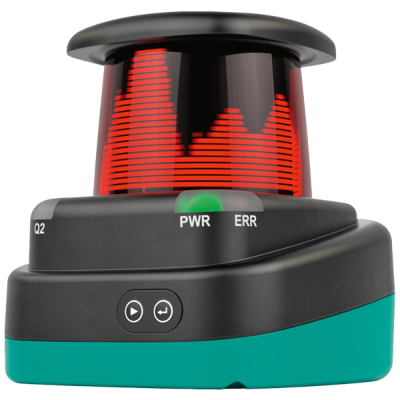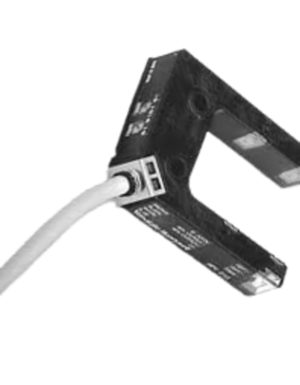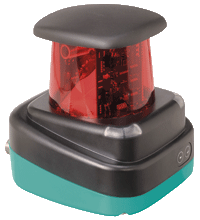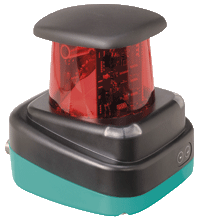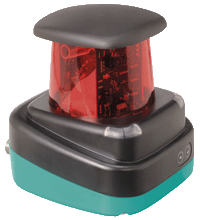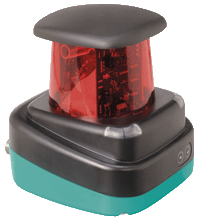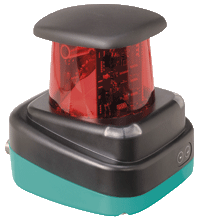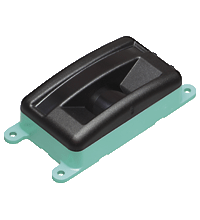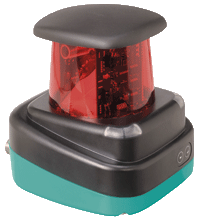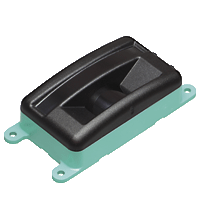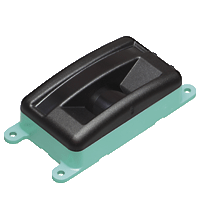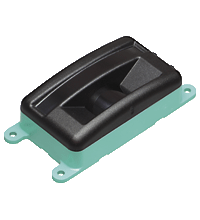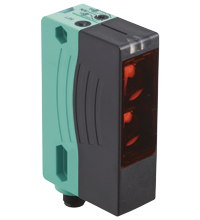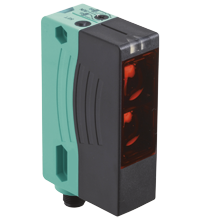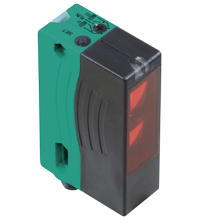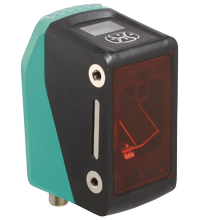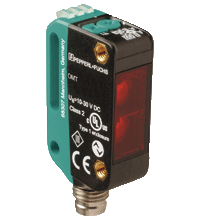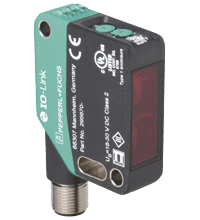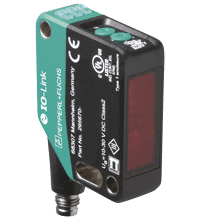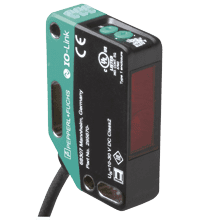Pepperl+Fuchs Distance Sensors
R2000
- Working distance range: 30 to 100 meters
- Angle resolution: 0.5 to 1 degree
- Scanning frequency: 20 to 40 Hz
- Number of inputs/outputs: 1 to 4
- pepperl fuchs r2000 price
HPV D13
- Current consumption: < 10 mA
- Reverse polarity protection: Yes
- Short circuit protection: Yes
- On/off delay time: < 2ms
- Operating temperature: -20°C...+70°C
- Distance measurement using object
- Measuring method PRT (Pulse Ranging Technology)
- Accurate, clear, and reproducible measuring results
- Minimal black-white difference
- Red laser as the light emitter
- Version with IO-Link interface
- Version with laser class 2
- 4 freely programmable monitoring fields
- 4 inputs/outputs (selectable)
- High angle resolution
- 360В°-angle of measurement
- Measuring method PRT (Pulse Ranging Technology)
- 4 freely programmable monitoring fields
- 4 inputs/outputs (selectable)
- High operating range
- 360В°-angle of measurement
- Measuring method PRT (Pulse Ranging Technology)
- Very narrow scan plane
- 4 freely programmable monitoring fields
- 4 inputs/outputs (selectable)
- High operating range
- 360В°-angle of measurement
- Measuring method PRT (Pulse Ranging Technology)
- Very narrow scan plane
- 4 freely programmable monitoring fields
- 4 inputs/outputs (selectable)
- High operating range
- High angle resolution
- 360В°-angle of measurement
- Measuring method PRT (Pulse Ranging Technology)
- 4 freely programmable monitoring fields
- 4 inputs/outputs (selectable)
- High operating range
- High angle resolution
- Deep-freeze applications
- 360В°-angle of measurement
- Measuring method PRT (Pulse Ranging Technology)
- Very high angle resolution
- Red laser as the light emitter
- Measuring method PRT (Pulse Ranging Technology)
- Flexible measured data filter
- Middle operating range
- High angle resolution
- Infrared light
- Measuring method PRT (Pulse Ranging Technology)
- High operating range
- Very high angle resolution
- Infrared light
- Measuring method PRT (Pulse Ranging Technology)
- Flexible measured data filter
- High operating range
- High angle resolution
- Infrared light
- Measuring method PRT (Pulse Ranging Technology)
- Flexible measured data filter
- High operating range
- Very high angle resolution
- Infrared light
- Deep-freeze applications
- Measuring method PRT (Pulse Ranging Technology)
- Flexible measured data filter
- Distance measurement using object
- Two-dimensional measurement with no moving parts
- Measurement using eye-safe LED technology
- 88?° scanning angle
- CANopen interface
- Measuring method PRT (Pulse Ranging Technology)
- High operating range
- Very high angle resolution
- Infrared light
- Measuring method PRT (Pulse Ranging Technology)
- Flexible measured data filter
- High operating range
- Very high angle resolution
- Infrared light
- Deep-freeze applications
- Measuring method PRT (Pulse Ranging Technology)
- Flexible measured data filter
- Distance measurement using object
- Two-dimensional measurement with no moving parts
- Measurement using eye-safe LED technology
- 88?° scanning angle
- CANopen interface
- Measuring method PRT (Pulse Ranging Technology)
- Measuring method PRT (Pulse Ranging Technology)
- Distance measurement using object
- Two-dimensional measurement with no moving parts
- Measurement using eye-safe LED technology
- 88?° scanning angle
- Distance measurement using object
- Two-dimensional measurement with no moving parts
- Measurement using eye-safe LED technology
- 88?° scanning angle
- CANopen interface
- Measuring method PRT (Pulse Ranging Technology)
- Extremely long detection range paves the way for new applications
- Pulse Ranging Technology (PRT)
- Analog output 4 ... 20 mA
- Visible light source for easy alignment
- Minimal black-white difference
- Absolutely reliable background suppression
- Extremely long detection range paves the way for new applications
- Pulse Ranging Technology (PRT)
- Analog output 0 ... 10 V
- Visible light source for easy alignment
- Minimal black-white difference
- Absolutely reliable background suppression
- Extremely long detection range paves the way for new applications
- Pulse Ranging Technology (PRT)
- Analog output 4 ... 20 mA
- Visible light source for easy alignment
- Minimal black-white difference
- Absolutely reliable background suppression
- Maximum measurement accuracy
- Red laser as the light emitter
- Display and keypad for parameter settings
- Compact and space-saving design
- Measuring method PRT (Pulse Ranging Technology)
- Maximum measurement accuracy
- Red laser as the light emitter
- Display and keypad for parameter settings
- Compact and space-saving design
- Measuring method PRT (Pulse Ranging Technology)
- Miniature design with versatile mounting options
- Space-saving distance sensors in small standardized design
- Multi Pixel Technology (MPT) - exact and precise signal evaluation
- DuraBeam Laser Sensors - durable and employable like an LED
- IO-link interface for service and process data
- Miniature design with versatile mounting options
- Space-saving distance sensors in small standardized design
- Multi Pixel Technology (MPT) - exact and precise signal evaluation
- IO-link interface for service and process data
- Miniature design with versatile mounting options
- Space-saving distance sensors in small standardized design
- Multi Pixel Technology (MPT) - exact and precise signal evaluation
- IO-link interface for service and process data
- Medium design with versatile mounting options
- Space-saving distance sensors in small standardized design
- Multi Pixel Technology (MPT) - exact and precise signal evaluation
- IO-link interface for service and process data
- Analog output 4 ... 20 mA
- Medium design with versatile mounting options
- Space-saving distance sensors in small standardized design
- Multi Pixel Technology (MPT) - exact and precise signal evaluation
- IO-link interface for service and process data
- Analog output 4 ... 20 mA
- Medium design with versatile mounting options
- Space-saving distance sensors in small standardized design
- Multi Pixel Technology (MPT) - exact and precise signal evaluation
- IO-link interface for service and process data
- Analog output 4 ... 20 mA
Pepperl+Fuchs offers various distance sensors for industrial automation and measurement applications. These sensors are part of their extensive range of sensors and are known for their measurement accuracy and reliability. Below we will look closer at sensors to measure distance from Pepperl+Fuchs.
Working Principle of Distance Sensors
Let's look at how Pulse Ranging Technology (PRT) works. In this measurement method, a powerful light source emits short, high-energy pulses that bounce off the target object and are then re-captured by a light-sensitive receiver. During this process, the transmission and reception times determine with high accuracy. From the obtained values, the distance to the target object calculating using the operating time of the light pulses. If the target object is close, the light propagation time is short. The farther the object, the longer the light propagation time.
Pepperl+Fuchs Distance Sensor Product Range
And now let's delve into what kind of distance detection sensors Pepperl+Fuchs offers.
Distance sensor R1000
The R1000 series sensors are compact, measuring only 55 x 116 x 81 mm. But at the same time, their range of action reaches 150 m. In this way, these sensors can be integrated even into tiny machines or lifting devices. Since the sensor is equipped with PRT technology as standard, it has metal threaded holes, allowing direct mounting over short measurement distances.
R2000 2D laser scanners (2D LiDAR sensor)
The R2000 series combines standard sensors with the latest measurement methods. The R2000 2D laser scanners and the PRT provide reliable and highly accurate measurement results. Sensors are available in various modifications R2000 UHD is suitable for complex measurement tasks and navigation. The R2000 HD is used for object grading and robotic applications. The R2000 Detection is an easy-to-use laser scanner for demanding field monitoring applications.
R2100 multi-beam LED scanner (2-D LiDAR sensor)
The R2100 multi-beam LED scanner combines PRT and ultra-IR LEDs with multi-beam scanning capability. The LED transmitter elements are positioned side by side, providing a two-dimensional surface measurement with eleven light points. This allows you to accurately detect any surface, regardless of its shape or texture.
R2300 LiDAR sensors
R2300 series LiDAR sensors can detect even the most minor structures and contours of objects due to their high angular resolution. The multi-layer scanner with four scan planes provides high reliability and cost-effectiveness for 3D measurements. In contrast, the single-layer scanner with a scan rate of 100 Hz is ideal for high-speed applications.
R10x series photoelectric sensors
These photoelectric distance sensors combine several families of photoelectric sensors. Thus, DuraBeam laser technology and MPT distance measurement provide reliability and accuracy. Also, the sensor is equipped with an IO-Link function that meets all the requirements of Sensorik4.0.
Distance sensor VDM28
The VDM28 distance sensor is a compact device with PRT, allowing it to show incredible performance. The sensor is built into a tiny case from the standard 28-series sensor range. You can use the VDM28 universal distance sensor in various industries and applications.
Applications of Pepperl+Fuchs Distance Sensors
Let's find out the main areas of application of Pepperl+Fuchs distance sensors.
- Object detection and positioning. Distance sensors are used for detecting the presence or absence of objects in automated manufacturing and assembly processes. They can also determine the position of objects for precise alignment and positioning tasks.
- Robotics. In robotic systems, distance sensors play a critical role in object recognition, obstacle detection, and collision avoidance. They enable robots to interact with their environment safely and accurately.
- Material handling. Distance sensors are utilized in conveyor systems and material handling equipment to control the movement of goods and optimize processes. They help detect the presence of packages or objects on the conveyor and trigger actions accordingly.
- Level measurement. In liquid or bulk material storage tanks, distance sensors are employed for accurate level measurements. This is common in industries such as chemical processing, water treatment, and food and beverage.
- Proximity sensing. Distance sensors are used for proximity sensing in applications where precise detection of nearby objects is required. This is particularly useful in industrial automation and safety systems.
- Automotive. In the automotive industry, distance sensors are used in advanced driver assistance systems (ADAS) for collision avoidance, parking assistance, and adaptive cruise control.
- Packaging. Distance sensors play a vital role in packaging applications, ensuring proper product placement, measuring dimensions, and verifying package integrity.
- Quality control and inspection. Distance sensors are used in quality control and inspection processes to measure dimensions and verify tolerances in manufacturing.
- Mining and construction. In mining and construction equipment, distance sensors are used for accurate positioning, object detection, and collision avoidance to enhance safety and productivity.
- Pharmaceuticals. Distance sensors are used in pharmaceutical manufacturing to ensure precise filling, packaging, and labeling processes.
- Agriculture. In agricultural machinery and equipment, distance sensors help with precision farming by providing accurate measurements for seeding, spraying, and harvesting.
Benefits of Pepperl+Fuchs Distance Sensors
Here are the main advantages of Pepperl+Fuchs distance measurement sensors.
- High accuracy and precision. Pepperl+Fuchs distance sensors are designed to provide precise and accurate distance measurements. This level of accuracy is essential for critical applications in industrial automation, robotics, and quality control.
- Reliable performance. These sensors are known for their reliability and robust construction, ensuring consistent performance even in challenging environments with vibration, dust, or temperature variations.
- Wide range of sensing technologies. Pepperl+Fuchs offers a diverse range of distance sensors based on different technologies such as ultrasonic, laser, inductive, capacitive, and photoelectric. This variety allows users to select the most suitable sensor for their specific application needs.
- Flexibility in integration. The distance sensors from Pepperl+Fuchs are designed to be easily integrated into existing systems and automation setups. They often come with various output options and communication protocols to facilitate seamless integration with control systems.
- Long sensing range. Many Pepperl+Fuchs distance sensors have extended sensing ranges, enabling them to cover large areas or detect objects from significant distances, making them versatile for various applications.
- Fast response time. The sensors offer fast response times, which is crucial for high-speed applications and real-time control systems.
- Customizable solutions. Pepperl+Fuchs provides options for customization to suit specific application requirements, ensuring that the sensor meets the unique needs of the industry or process.
- Energy efficiency. The distance sensors are designed to operate efficiently, consuming minimal power during their operation. This helps reduce energy costs and extends the lifespan of battery-powered devices.
- Cost-effectiveness. Considering the high accuracy and reliability they offer, Pepperl+Fuchs distance sensors deliver excellent value for the investment.
- Enhanced safety. In applications like robotics, industrial automation, and ADAS (Advanced Driver Assistance Systems), the high precision and reliable performance of Pepperl+Fuchs distance sensors contribute to enhanced safety for personnel and equipment.
Installation and Maintenance of Pepperl+Fuchs Distance Sensors
Next, we would like to present you with some tips for installing and maintaining distance sensors.
- Read the manual.
- Choose the right location.
- Use the recommended mounting hardware.
- Correctly align the probe with the target or surface.
- Protect the sensor from environmental factors.
- Use the correct cables and connectors.
- Apply the appropriate voltage and current to the sensor.
- Follow the manufacturer's instructions for calibration procedures.
- Perform regular inspections of the sensor.
- Keep the sensor clean.
- Periodically inspect sensor cables and connectors for signs of wear or damage.
- Make sure that the sensor body and the installation site are free of dust, dirt, and debris that could interfere with its operation.
- Periodically check the performance and accuracy of the sensor.
- Check for firmware or software updates provided by Pepperl+Fuchs.
